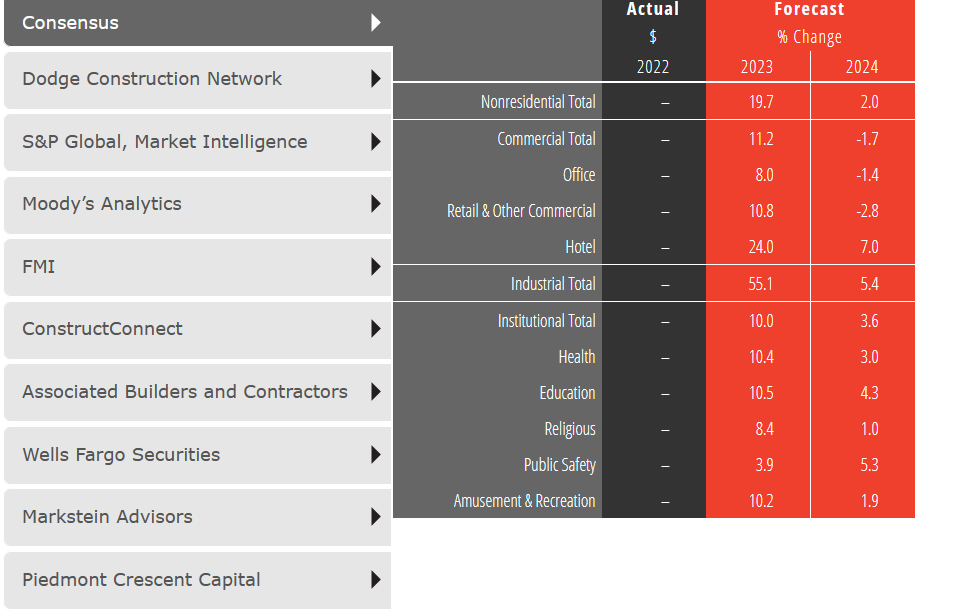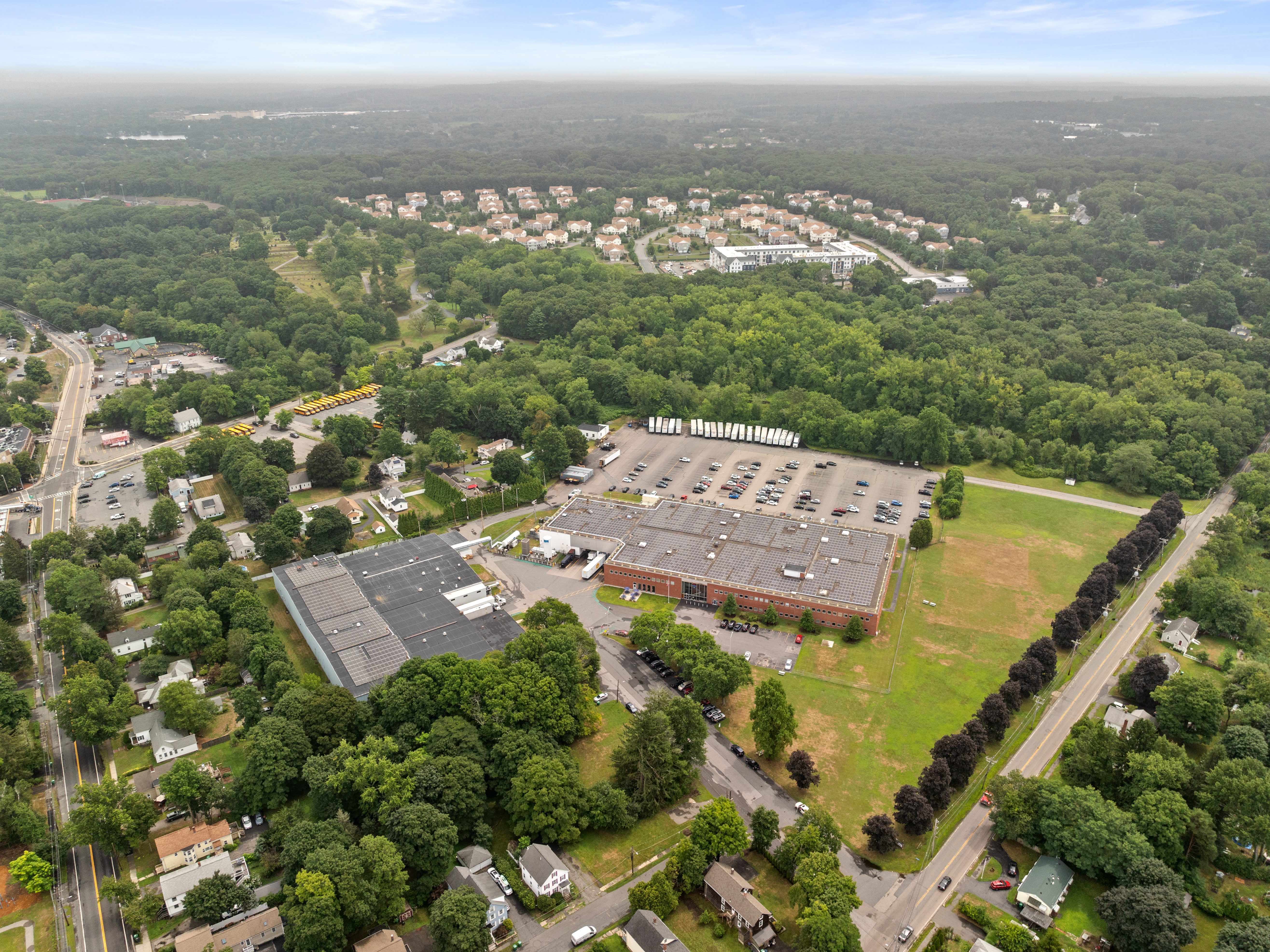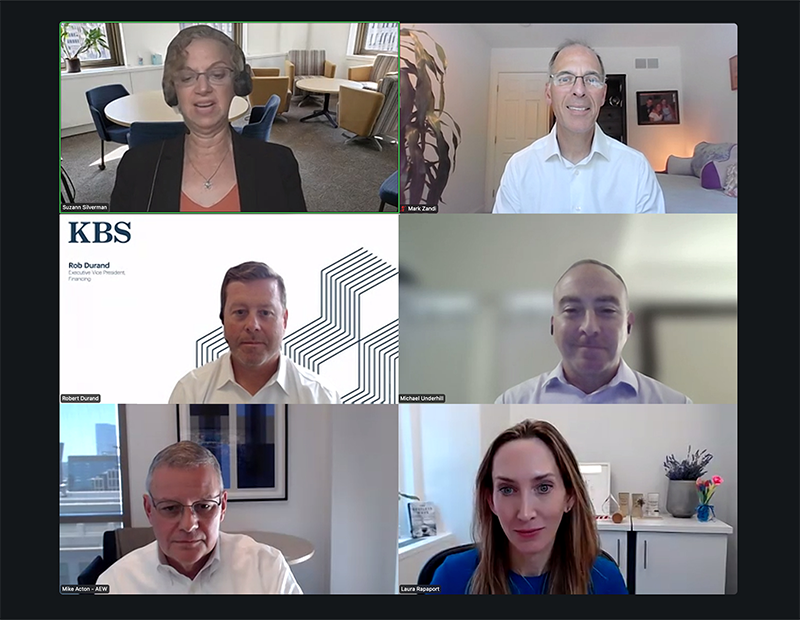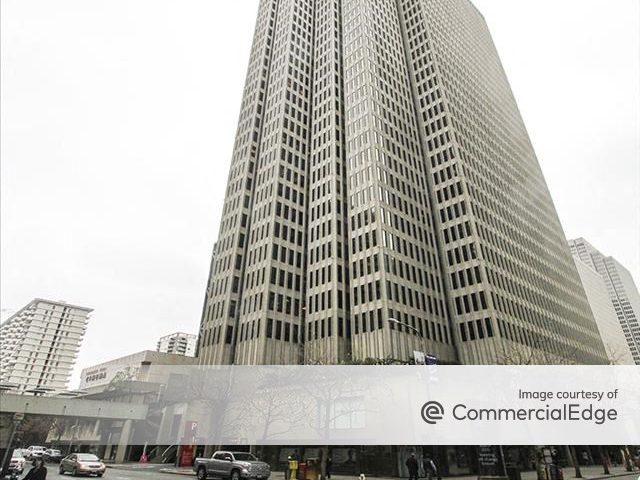Construction Spending Booms Across the Board
Outlays are increasing at the biggest rate since before the Great Recession, according to the AIA’s new forecast.

Kermit Baker, Chief Economist, American Institute of Architects. Image courtesy of American Institute of Architects
Nonresidential construction spending is expected to increase by 20 percent this year—a rate not seen since before the Great Recession—with slower gains predicted for 2024, according to a new forecast from the American Institute of Architects.
Industrial construction is leading the gains this year, with spending expected to be up 55.1 percent over last year. While that sector is still projected to be the leader next year, the economic forecasters are expecting the increase to be about 5.4 percent in 2024.
Other gains this year are expected to be seen in the total commercial sector, up 11.2 percent; office, up 8 percent; retail and other commercial, up 10.8 percent and hotel spending up 24 percent.
Other than public safety, which is expected to increase construction spending by nearly 4 percent this year, and religious projects, expected to come in at an 8.4 percent increase, all other sectors have double-digit projections for 2023. The total institutional spending increase is expected to be 10 percent, with health spending predicted to be up 10.4 percent this year, education spending up 10.5 percent and amusement and recreation up by 10.2 percent.
READ ALSO: Nearshoring Is Boosting Supply Chain Resilience
The report authored by AIA Chief Economist Kermit Baker notes the rate of construction spending is expected to moderate during the second half of this year. While supply chain issues have eased and the pricing of many construction materials and products has improved, other economic headwinds are expected to affect projects. Baker cited elevated interest rates, more restrictive lending by banks, nervousness over the direction of the economy and construction labor constraints among the impacts.
Going forward, the numbers for 2024 drop dramatically, according to the panel’s forecast. The panel includes economic forecasters from Dodge Construction Network, S&P Global Market Intelligence, Moody’s Analytics, Associated Builders and Contractors and Wells Fargo Securities, among others.
Overall spending on nonresidential buildings is predicted to be just 2 percent in 2024, with a projected modest decline of 1.7 percent in the commercial sector, a 3.6 percent increase in spending on institutional facilities and only 5.4 percent for the industrial sector.
The report noted that while spending on nonresidential buildings increased by more than 10 percent over last year, once inflation is factored in, the real increases were much lower.
“This means that while companies are investing heavily in new buildings and renovations this year, their investments may not translate into comparable economic growth or employment opportunities,” the report stated.
Even though overall inflation has dropped dramatically over the past year, from over 9 percent compared to year-ago levels in mid-2022 to around 3 to 4 percent at present, the Federal Reserve is still fighting inflation and further declines may be more difficult to realize, according to the report. Most economists still expect the Fed to raise its benchmark overnight interest rate by 25 basis points to the 5.25 percent to 5.50 percent range when it meets next week.
Hot sectors
This year’s strong growth in spending in the industrial sector is largely attributed to more manufacturing facilities being built to reshore production after the supply chain nightmares during the pandemic, according to the report. Pharmaceuticals make up a sizeable portion of the production increase, but the plastic industry has also seen increases in domestic manufacturing. Distribution facilities are also part of the growth, though the experts expect spending on warehouses and distribution assets to moderate as e-commerce activity has slowed from its pandemic peaks. The report notes spending will be focused more on automating existing properties rather than building new facilities.
Another category seeing increased spending this year and into next year is health care. Utilization increased during the pandemic but demographics are also playing an important role as the need for more health-care facilities for an aging baby boom generation continues to grow. Health-care construction spending is expected to be up 10 percent this year and an additional 3 percent in 2024.
Education is also seeing double-digit construction spending increases this year. The report notes college and university starts are up 14 percent this year and starts for preschool and elementary facilities increased 9 percent. While the pace is expected to slow over the rest of this year, the panel is forecasting an overall 10.5 percent increase for 2023 and another 4.3 percent increase in 2024 on education construction.








You must be logged in to post a comment.